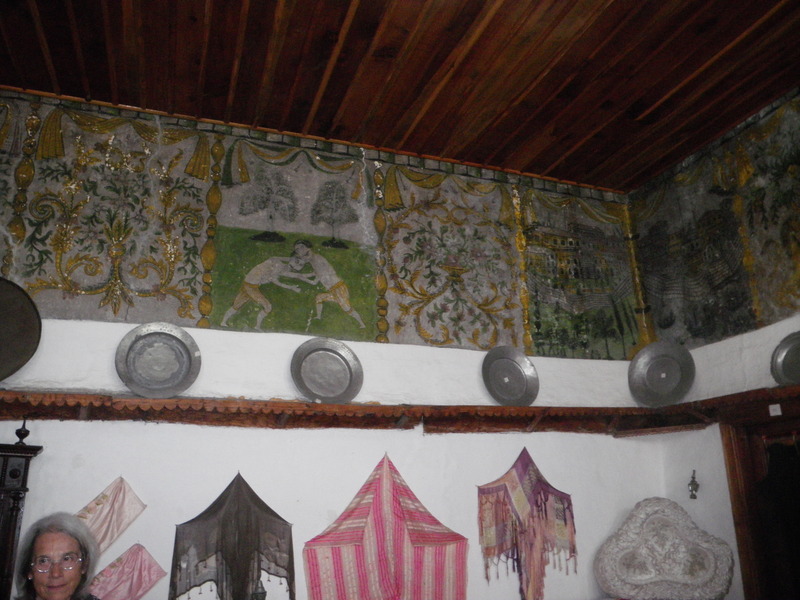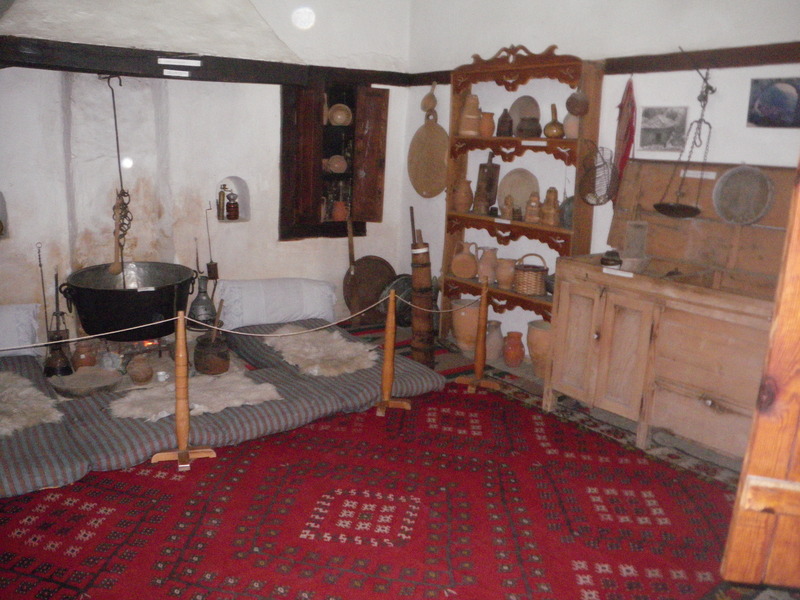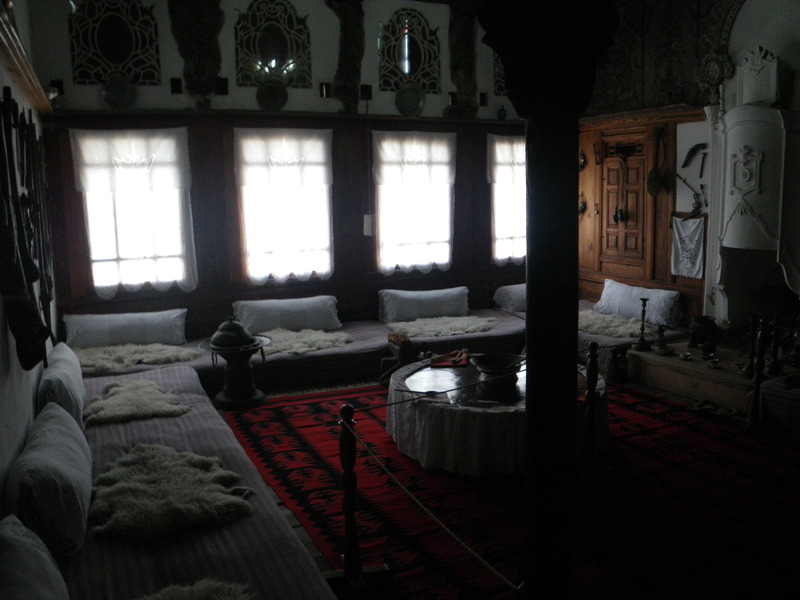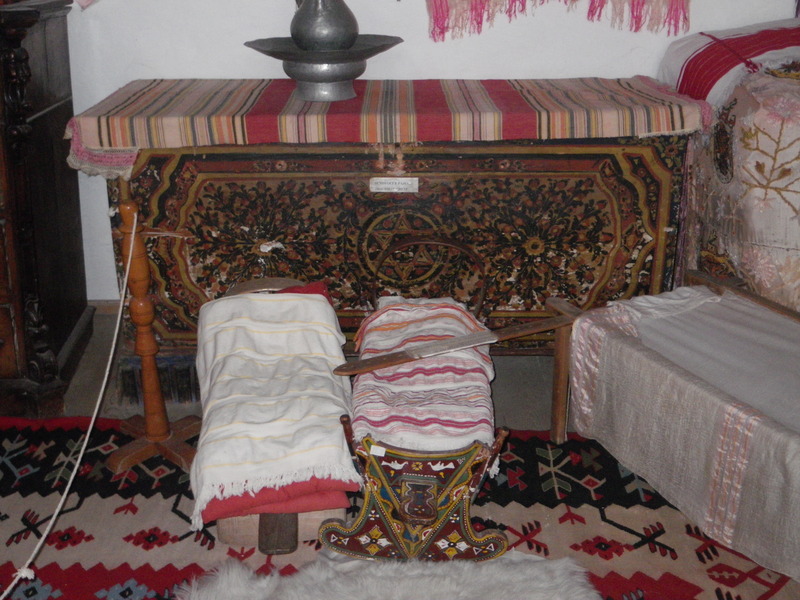
The great Albanian hero, Georg Kastrioti Skanderbeg, had a great castle in the mountains about 20km North of Tirana, Kruje (or Kruja) castle. Although besieged multiple times in this castle by large Ottoman armies, he was always victorious, and preserved Albanian independence for 20 years before his death by malaria.


Skanderbeg's crown has a horned goat on it. Legend has it that in the second Ottoman siege of Kruje, Skanderbeg's army lit candles on the horns of a herd of goats, and sent them out on a dark night. The Ottoman army, thinking the goats were Skanderbeg's army coming forth from Kruje castle, attacked the herd of goats. Then, Skanderbeg's army really came forth from the castle and attacked the very confused Ottoman soldiers, defeating them. The original crown is in a museum in Vienna, though there are plans for the crown to be on display in Albania for the 100th anniversary of the Albanian state later this year (2012).
In any case, modern statues of Scanderbeg generally show him with his helmet with a goat on it. The first sculpture, done in a heroic style that seems to have been popular with communist governments from Russia all the way to Albania, shows Scanderbeg at the head of his army.
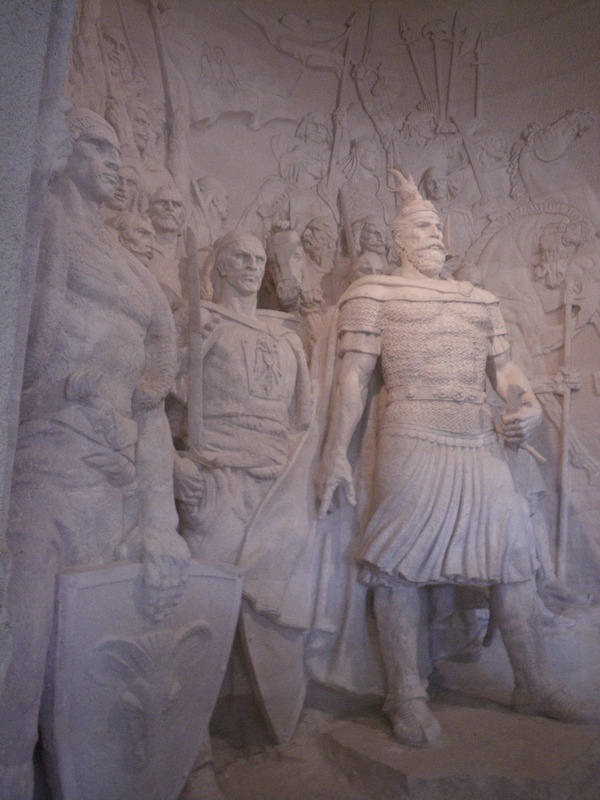
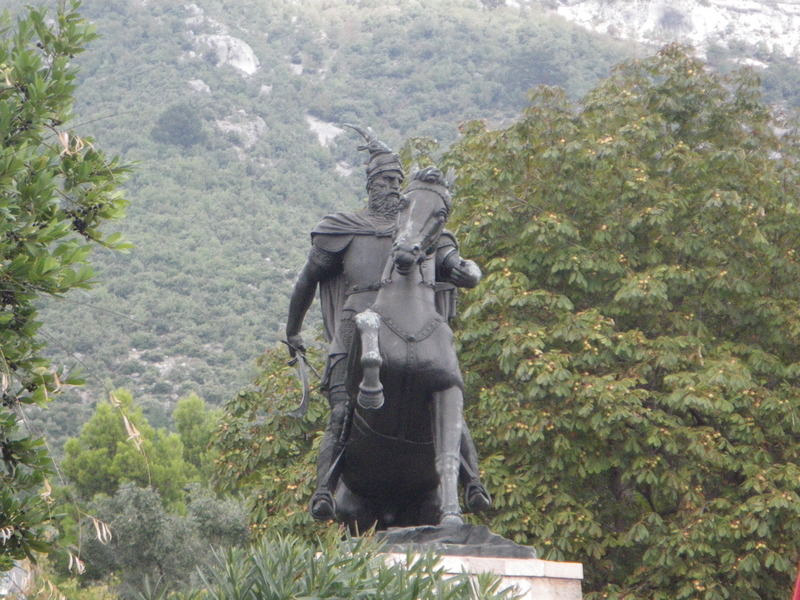
The castle is on the side of a mountain, and is about 600m above sea level. The surroundings are beautiful.
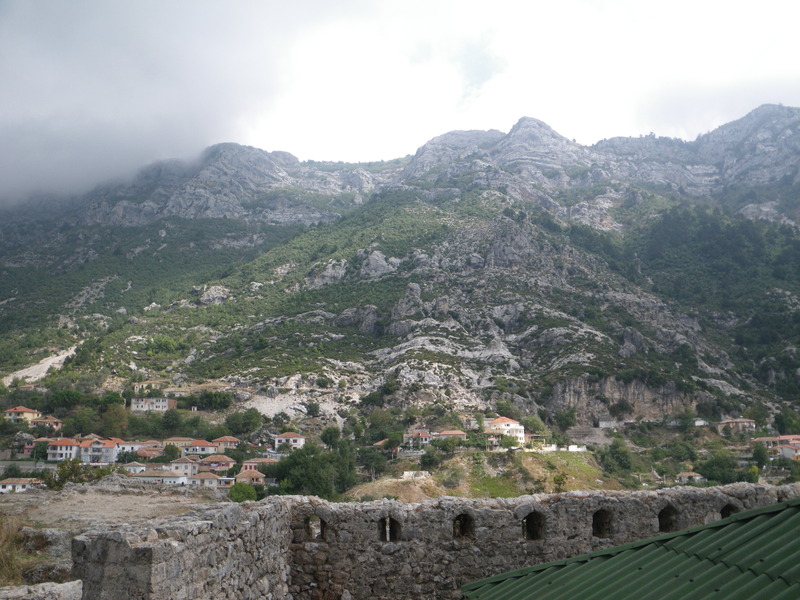
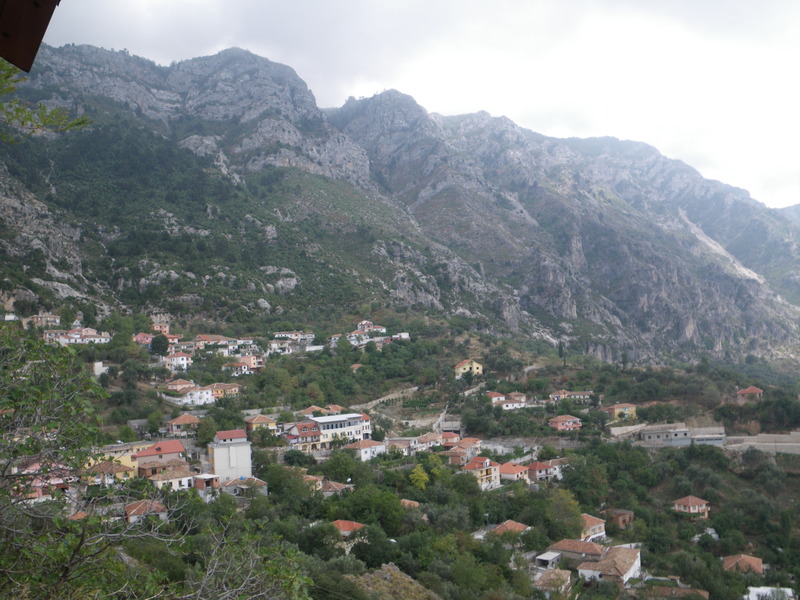

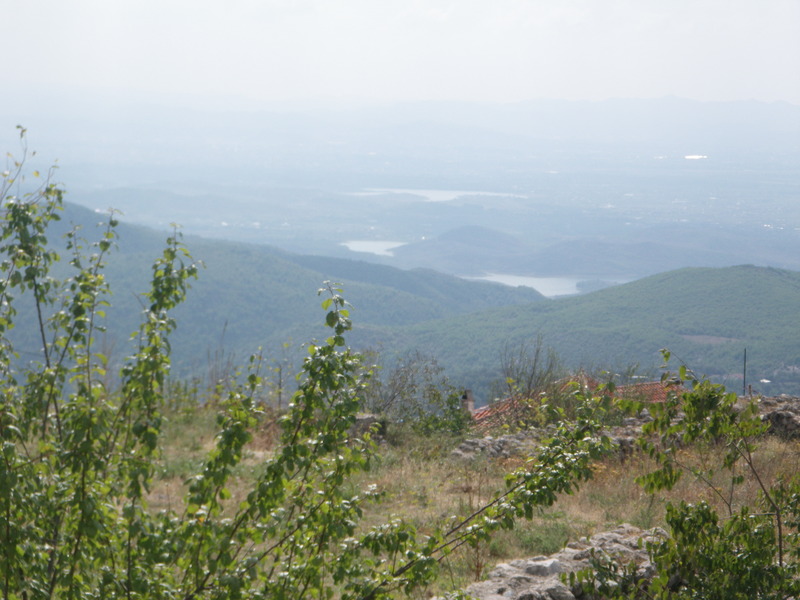
Skanderbeg led an interesting life. Born to Albanian nobility in a time of Ottoman domination, he was sent to Constantinople as a hostage, and there became a great Ottoman general. The name Skanderbeg is taken from Iskander, which is the Turkish name for Alexander the Great, and beg or bey, a great commander.
After 20 years, he deserted with his army, and started an independent state in Albania. The entire rest of his life he successfully fought successive Ottomans armies, in part through successful strategy and tactics, and in part by entering into alliances with other powers. In Rome there is still a Palazzo Castriota Scanderbeg, where he stayed while on an embassy to the popes for money and assistance in fighting the infidels. As I understand it, he got little real support from the pope, but got substantial support from the king of Aragon in Naples.
After his death, his wife and his son escaped Albania and settled in Naples. At this time many other Albanians also left Albania and settled in Italy, to form what are now the Albanian communities of Southern Italy.
Skanderbeg's son and later his grandson returned to Albania to fight the Ottomans, but were not successful.
The ethnographic museum in Kruje is housed in a 250-year old house built by a wealthy family inside the castle walls. The displays on the ground floor include smaller millstones used for grinding grain by hand, and larger millstones used with water power for grinding grain, and driven by donkeys to press olives.





There were also looms, both hand- and water-powered, and implements for working leather, including basins for salt, sulfur, lime, and tannin, and an olive press for extracting the oil after the olives had been ground in the millstone.
On the upper level were the rooms where the family actually lived. The rooms were nicely decorated with carpets and frescoes, and even included some dowry chests and cradles.
